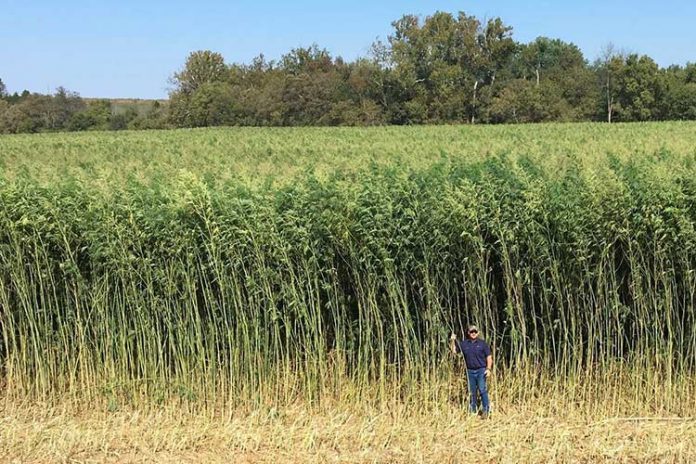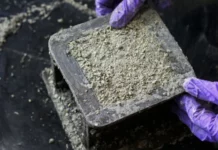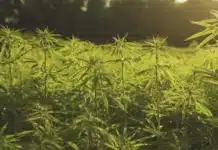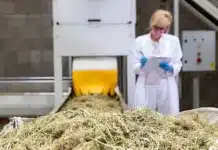The Pennsylvania Department of Agriculture and the Pennsylvania Hemp Association are working to set the stage as America’s hemp capital.
In 2017, the state issued 14 permits of up to five acres each to farmers and universities wishing to grow industrial hemp.
This year, the program expanded to offer 50 permits of up to 100 acres each, plus unlimited acreage for universities who applied.
The application, which was due Jan. 19, requires a $2,000 fee and reporting throughout the season.
Industry in infancy
There is not a large market in the United States for hemp because the supply chain and infrastructure are not yet in place, said Erica McBride, the executive director of the state’s hemp association.
Growers can harvest hemp seed with a stand combine and sell them to companies who are already pressing other seeds for oil, such as soybeans and sunflowers.
“Farmers can sell the seed for 50 or 60 cents a pound now, and getting started with hemp will place them in a good position for when the industry takes off,” she said.
The average yield is 1,300 pounds of seed per acre.
Hemp has at least 25,000 other uses, according to the PDA’s website, including in biofuel, fabrics, oil, soap, feed, bedding and cosmetics.
Vote Hemp’s U.S. Hemp Crop Report found acreage of hemp crops more than doubled in one year, from 9,770 in 2016 to 23,346 in 2017.
Pennsylvania did not grow a single hemp crop in 2016, the Hemp Crop Report indicates, but if the state’s hemp cultivation reaches 5,000 acres in 2018, it will out-produce every state’s 2017 output except for Colorado.
Learning
Growing hemp for the first time in 70 years comes with a learning curve, said Fred Stathmeyer Jr., deputy secretary of agriculture, plant industry.
Like with most plants growing them on sub-marginal soils, doesn’t have nearly the results, Strathmeyer said.
“The crop planted in nitrogen-rich soil had good success.”
A challenge to 2017’s growing season was weed control or lack thereof, he said.
“Farmers were hoping it would come in dense. Again, there was a learning curve, on how many seeds to plant per acre. With no herbicides labeled for hemp, at this point, weeds were an issue.”
Processing
Leading the way in academic research are Lehigh University, Thomas Jefferson University and the Pennsylvania Hemp Industry Council as they are forming a partnership to study ways to make hemp production commercially viable.
They are going to continue seed, nutrient and soil testing plots, said McBride, and this year they plan to grow hemp on an abandoned coal mine to see how it does on such restored land.
They also have plans to build a processing facility, in Lehigh, that will be the first of its kind in the U.S., McBride said. The facility will be extracting the fiber from the hemp plant stocks.
“We hope to get it up and running this year, but there is a lot of moving parts.”
The facility will be able to process 14,000 acres of hemp per year.
“The goal is to start with the 1,000 acres, ramp it up to 8,000 next year and keep growing until we max out,” she said.
The hemp association plans to be at full capacity, eventually contracting farmers to grow the hemp.
“America currently has no processing facilities of this scale to collect the fiber,” McBride said. “Only Holland and Romania have this type of facility and [they] provide all the hemp fiber of the European auto industry.”
Once it is operational, it will employ 20 people, she said. The association would like to add several more to get the processing facilities closer to farms.
“We’d like to have a processing facility with in a 50-to 75-mile radius of every grower,” McBride said.
“Processing plants do need to part of our next steps, but right now we are looking for success. If they are learning, that is success — moving the hemp story forward,” said Strathmeyer.
Farm show
To continue to move the hemp story forward, the association set up a booth at the 2018 Pennsylvania Farm Show last month. In the booth, they had hemp plants that were about a month old.
“The most common question was, ‘Is this marijuana?’” McBride said. “At that stage of hemp growth, it does look a lot like marijuana, so the plants started a lot of conversations.”
The hemp display also included a BMW automobile from Europe with an interior made largely of hemp. A workshop, at the show, demonstrated to visitors how to build a wall out of “hempcrete.”
Legislation
The next step is in Washington’s hands, said Strathmeyer.
U.S. Rep. James Comer, R-KY, introduced a bill, H.R. 3530 in July 2017 is asking that hemp be removed from the controlled substances list and treated like a commodity crop.
The state departments would still monitor the crop to make sure it falls between the guidelines and Tetrahydrocannabinol (THC) levels.
Also in the 2018 farm bill, Sec. 76.06 has language seeking to allow for commercial activity of hemp.
“This is more of a backup plan. We hope to get H.R. 3530 passed and then we won’t have to rely on the farm bill,” McBride said.
The first hearings for this House bill are set for March.
“The hope is in a few years, it will be just like any other crop, but that day isn’t here,” said Strathmeyer.














